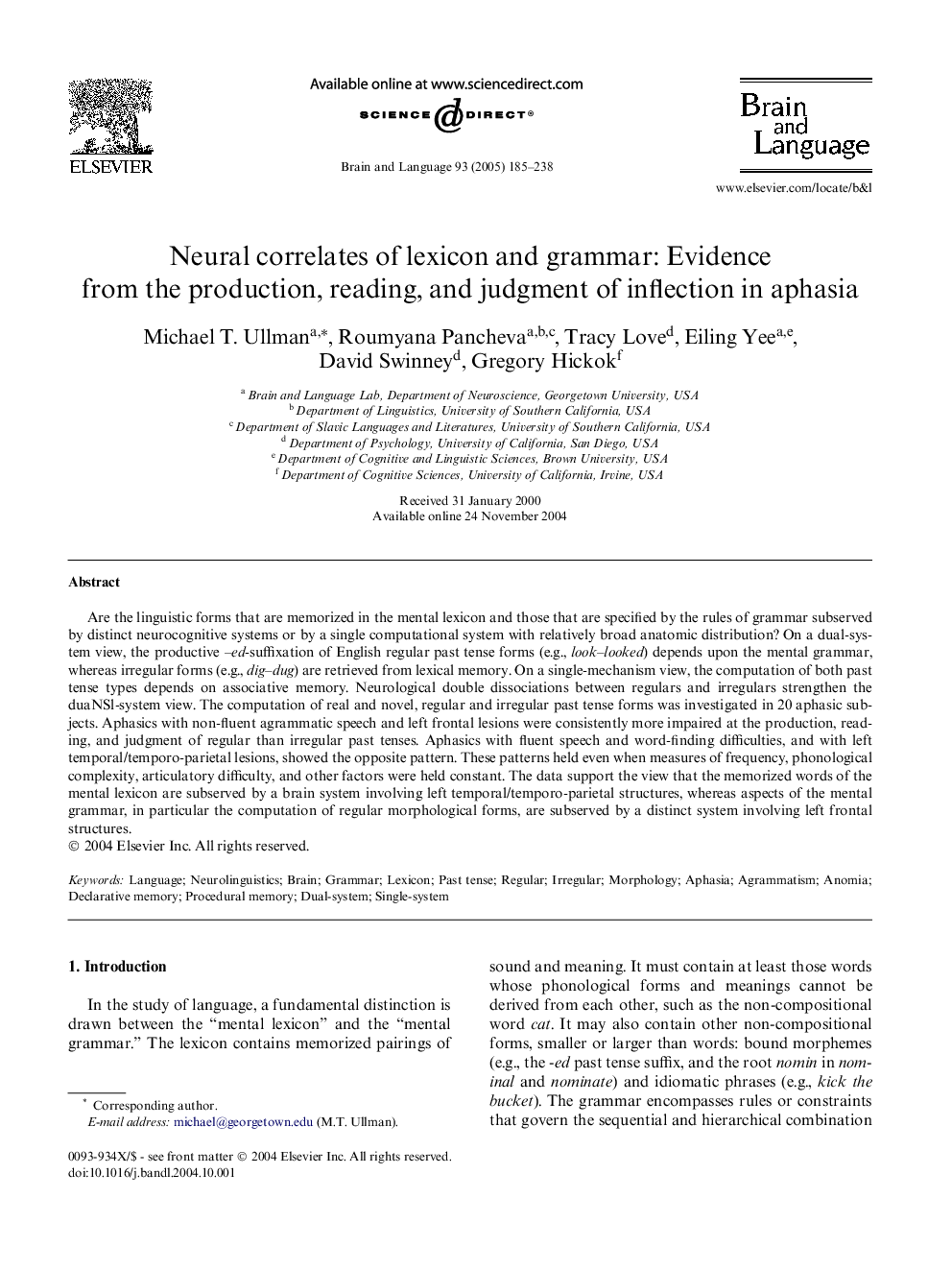| Article ID | Journal | Published Year | Pages | File Type |
|---|---|---|---|---|
| 10456571 | Brain and Language | 2005 | 54 Pages |
Abstract
Are the linguistic forms that are memorized in the mental lexicon and those that are specified by the rules of grammar subserved by distinct neurocognitive systems or by a single computational system with relatively broad anatomic distribution? On a dual-system view, the productive -ed-suffixation of English regular past tense forms (e.g., look-looked) depends upon the mental grammar, whereas irregular forms (e.g., dig-dug) are retrieved from lexical memory. On a single-mechanism view, the computation of both past tense types depends on associative memory. Neurological double dissociations between regulars and irregulars strengthen the dual-system view. The computation of real and novel, regular and irregular past tense forms was investigated in 20 aphasic subjects. Aphasics with non-fluent agrammatic speech and left frontal lesions were consistently more impaired at the production, reading, and judgment of regular than irregular past tenses. Aphasics with fluent speech and word-finding difficulties, and with left temporal/temporo-parietal lesions, showed the opposite pattern. These patterns held even when measures of frequency, phonological complexity, articulatory difficulty, and other factors were held constant. The data support the view that the memorized words of the mental lexicon are subserved by a brain system involving left temporal/temporo-parietal structures, whereas aspects of the mental grammar, in particular the computation of regular morphological forms, are subserved by a distinct system involving left frontal structures.
Keywords
Related Topics
Life Sciences
Neuroscience
Biological Psychiatry
Authors
Michael T. Ullman, Roumyana Pancheva, Tracy Love, Eiling Yee, David Swinney, Gregory Hickok,
